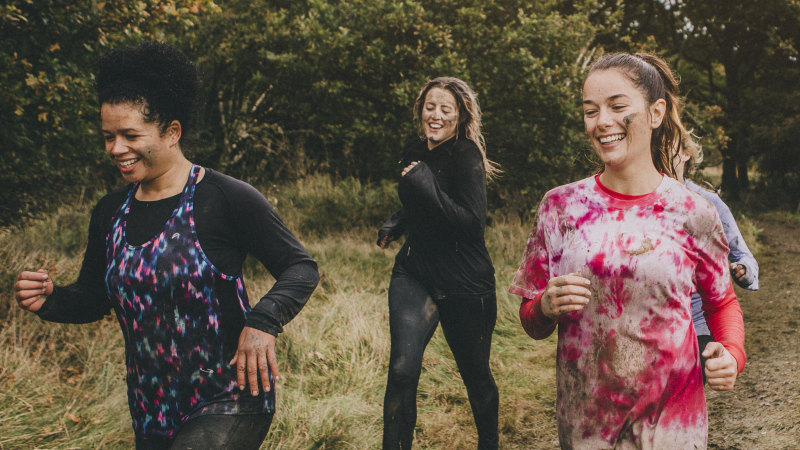[ad_1]
Or you could try a little forest-bathing — a mindful, sensory way to walk in nature — and scoop up a handful of dirt.
“Spend some time looking at it and inhaling the aromas,” says Amos Clifford, the founder of the Association of Nature and Forest Therapy Guides and Programs and the author of Your Guide to Forest Bathing. “Sift it through your fingers, then bring your hands to your face.” If Clifford comes across a stream as he’s guiding a walk, he invites people to take off their shoes and step into the “mushy, muddy bottom,” feeling the textures.
If getting your hands and feet dirty isn’t enough, find a local mud runwhere participants race through muck and tackle obstacles along the way.
Plant or pick something
Gardening has long been associated with reduced depression, anxiety and stressand it calls for plenty of time spent working in the dirt.
When people ask him how to get started, Leigh Johnstone, a gardener and mental health advocate in Southampton, England, who goes by “The Beardy Gardener” to his 21,000 Instagram followers, asks them one question: “Well, what do you like to eat?”
Tomatoes are one of the easiest things to grow, says Johnstone, because they need very little maintenance and can be planted in a pot or hanging basket on a balcony. He also suggested strawberries and herbs such as basil, mint or chives.
Or create a habitat garden, which uses native plants to attract and feed wildlife, says Mary Phillips, who leads gardening habitat programs for the US National Wildlife Federation.
Do like the kids do
Jill Dreves, the founder of Wild Bear Nature Centre in Nederland, Colorado, has a simple recipe for getting dirty: make a mud pie.
She suggested throwing something similar to a sip and paint event: ask everyone to bring an old cake pan and get creative with mud.
Loading
“Bring out some rocks and beads to press into them, collect some pretty leaves, press your hands or feet in,” says Dreves, who has organised mud pie parties with her staff. “We save that kind of thing for little kids, but really, as adults, we need to be doing more of it.”
If you have actual kids to entertain, build a fairy garden, Yurich says. Gather leaves and moss to create a miniature, magical landscape, using sticks to construct huts, bark for the floor and stones for seating.
Johnstone and his two-year-old daughter like making bug hotelswhich encourage insects to shelter inside. They also make seed bombs, which you can assemble any time of year, then store until spring or autumn to throw around the yard, Johnstone says.
“A lot of people still have this nervousness around touching soil,” he says. But for him, “it makes me happy”.
The New York Times
Make the most of your health, relationships, fitness and nutrition with our Live Well newsletter. Get it in your inbox every Monday.
[ad_2]
Source link
